PHOTOS: Lily Allen And Lepa Brena Arrive In Croatia
August 20, 2020 – Croatian coast a hit in August 2020 with international pop stars including Lepa Brena and Lily Allen
Croatia's coast has once again proved an irresistible draw to holidaying celebrities. The latest famous arrivals include regional pop megastar Lepa Brena and hit British singer Lily Allen.
Both Lepa Brena and Lily Allen have taken to their social media accounts over recent hours to announce their arrival in the country. Each has posted pictures of their vacations on the beautiful, sun-soaked coast of Dalmatia.
Lepa Brena, the revered originator of the massively popular regional pop-folk sound posted pictures from Mljet island, but Lily Allen has already travelled between Lastovo and Vis island. And while photos taken by Brena have been all about the beautiful Croatian scenery, Lily's have been smiling selfies as she thoroughly enjoys a break with her family. Here's how they saw Croatia through their social media on the first days of their visits.
Lepa Brena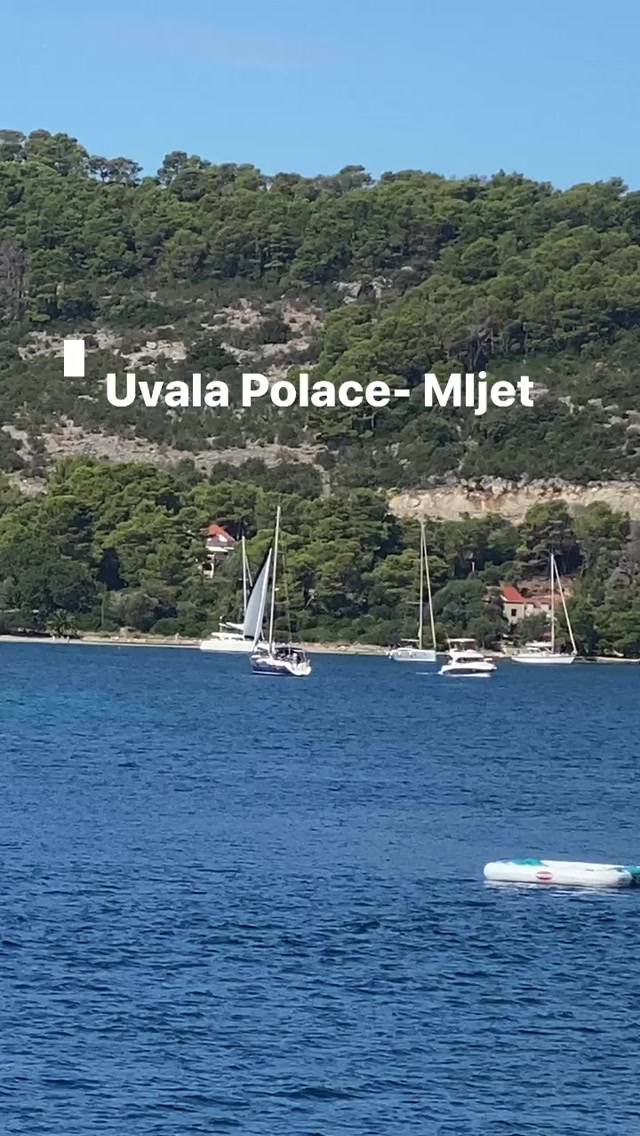
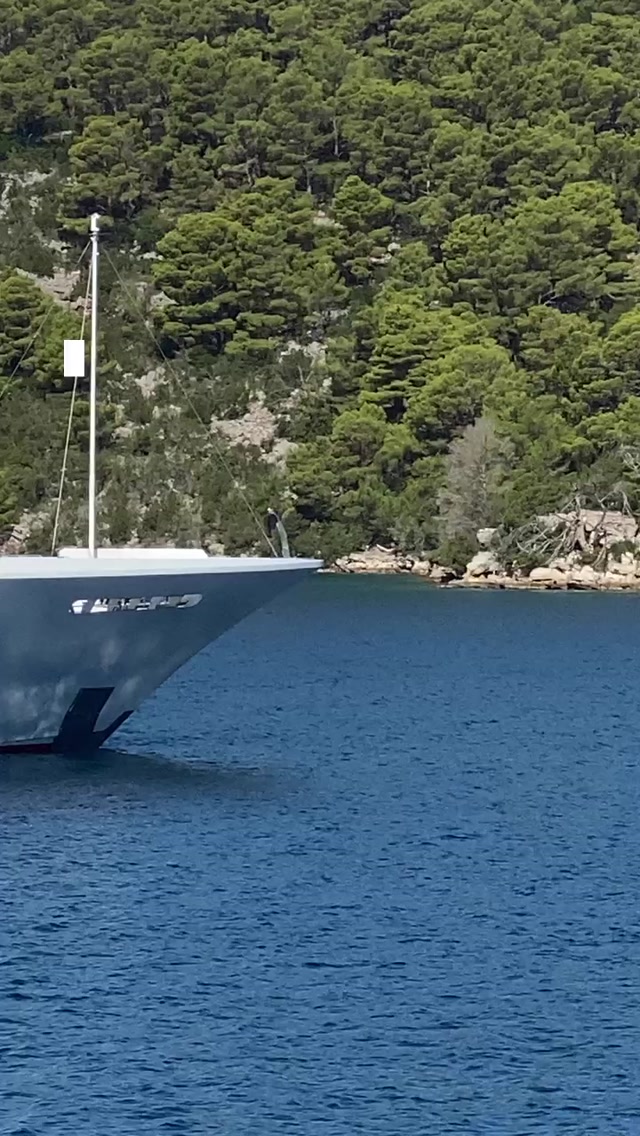
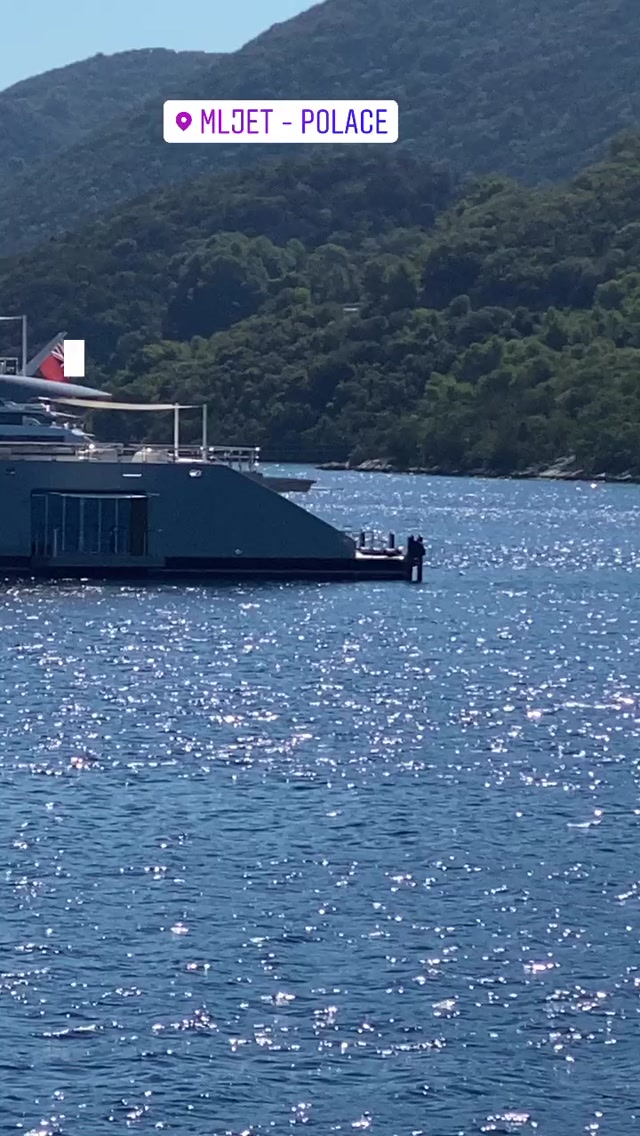
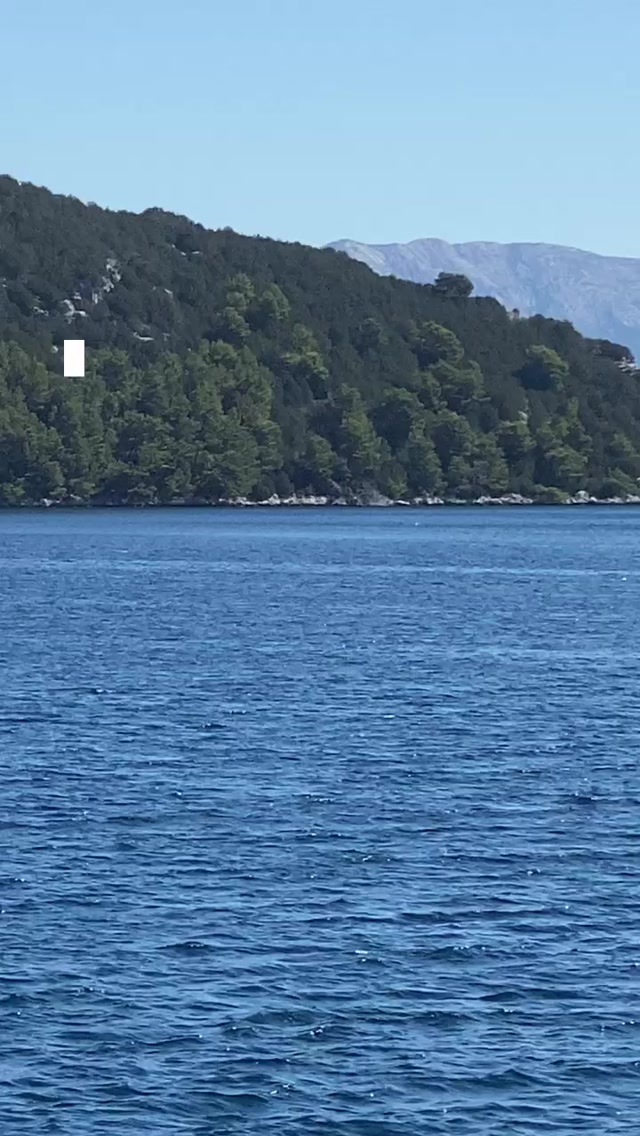
Lily Allen



All images sourced from Instagram
Croatia On Slovenia RED List. What Does That Actually Mean?
August 20, 2020 – Slovenians must quarantine if returning from Croatia after the weekend, but what are the implications of Croatia on Slovenia RED list?
Update on August 20, after the official placement of Croatia on Slovenia RED list by the Slovenian government was made public: in order to make things easier for their nationals currently vacationing in Croatia, Slovenia has decided to extend the deadline for the return to Slovenia until Monday. Slovenians who own real-estate and boats in Croatia are given an extra 48 hours, so they can take care of their property before leaving Croatia without self-isolating upon return.
As reported in TCN yesterday, Slovenia has designated Croatia on Slovenia RED list as a country on its red list for travel. Sounds bad. But, what does it actually mean?
Well, for Slovenes, the choice is pretty simple – return home before the end of the weekend, or you'll face a mandatory two-week quarantine and Coronavirus test when you do. The quarantine and test will apply automatically to any Slovene travelling to Croatia after Friday.
But, what are the implications of Croatia on Slovenia RED list?
Well, the mandatory quarantine and test apply to any Croatian entering Slovenia after the weekend. There are exceptions – if you're just passing through, say, on your way to Austria or Germany, the quarantine doesn't apply. You'll have a maximum of 12 hours to travel into, through, and out of Slovenia. The same goes for delivery drivers who are just dropping off or picking up. You can stop for gas and use the WC. Special permits are also available for those who have to cross the border for daily trade.
Not such a big deal for Croats, then? Well, we'll have to wait and see. But, it doesn't look good. The economic implications could bite much harder.
From June, Slovenians have accounted for 7 million overnight stays in Croatia. As reported continuously in TCN's 2020 travel and tourism coverage, regional tourism - lead by those travelling by car – has accounted for the largest number of arrivals this year. Numbers of Slovenes holidaying in Croatia are actually up by as much as 3 percent compared to the same period last year.
In 2020, visitors from Croatia's next-door neighbour have been more important - and more numerous - than ever before, until Croatia on Slovenia RED list
According to the Croatian National Tourist Board, Slovenes accounted for 8.7% of arrivals and 11.5% of overnight stays in total over 2019, second only to Germans. During this 2020 season, in which their custom is more important than ever, the financial impact on Croatia may be much more damaging than that incurred from similarly imposed classifications by Austria and Italy, who recently announced mandatory testing for all returnees.
The peak days of the season are already behind us but, truth be told, the season only began in earnest a month ago. There was no pre-season this year. Hopes of an extended season, based on the optimistic numbers of July / early August, now seem to be dashed, due to the rise in number of COVID-19 infections. Certainly from the Slovenian market.
Will Slovenes and others accept a mandatory quarantine in exchange for their annual break on the Croatian coast? Some may. Surely, some won't. Any Slovenes planning trips in late August or September have been given serious cause to reconsider, thanks to the new classification. School and work start again in September – how does a two-week mandatory quarantine fit into that schedule?
Nobody really knows how long the 'red card' Slovenia has given Croatia will last, nor when it will end. The answer presumably lies in Croatia's ability to address its number of newly infected. Before all criticism for the stranglehold this classification places on the 2020 season is attributed to Slovenia, Croatia must first ask itself some tough questions; could Croatia – from staff and owners in the service industry, right the way up to state level - have done more to keep the numbers down? For it is the numbers now that can help save the remainder of Croatia's 2020 tourist season, not the Slovenes.
For the latest travel info, bookmark our main travel info article, which is updated daily.
Read the Croatian Travel Update in your language - now available in 24 languages
Can Good Communication Save The Season? Boškinac on Pag Busier Than In 2019
July 13, 2020 - Marc Rowlands interviews Boris Šuljić, owner of Boškinac on Pag, a Michelin-starred restaurant, to try and discover the secret to success in the challenging summer of 2020
Among the neverending doom and gloom of this year, a ray of sunshine through the clouds. At Boškinac on Pag, the restaurant, hotel and winery, business is booming. With better numbers than at this point in 2019, is it possible the luxury sector is suffering less this season from COVID-19? And what is the secret to Boškinac's success so far in 2020?
“I am very satisfied with this year's business,” Boškinac owner Boris Šuljić told TCN with a smile and a carefree tone to his voice. “It's definitely busier than last year. Some days are better than others but, generally, more people are coming.”
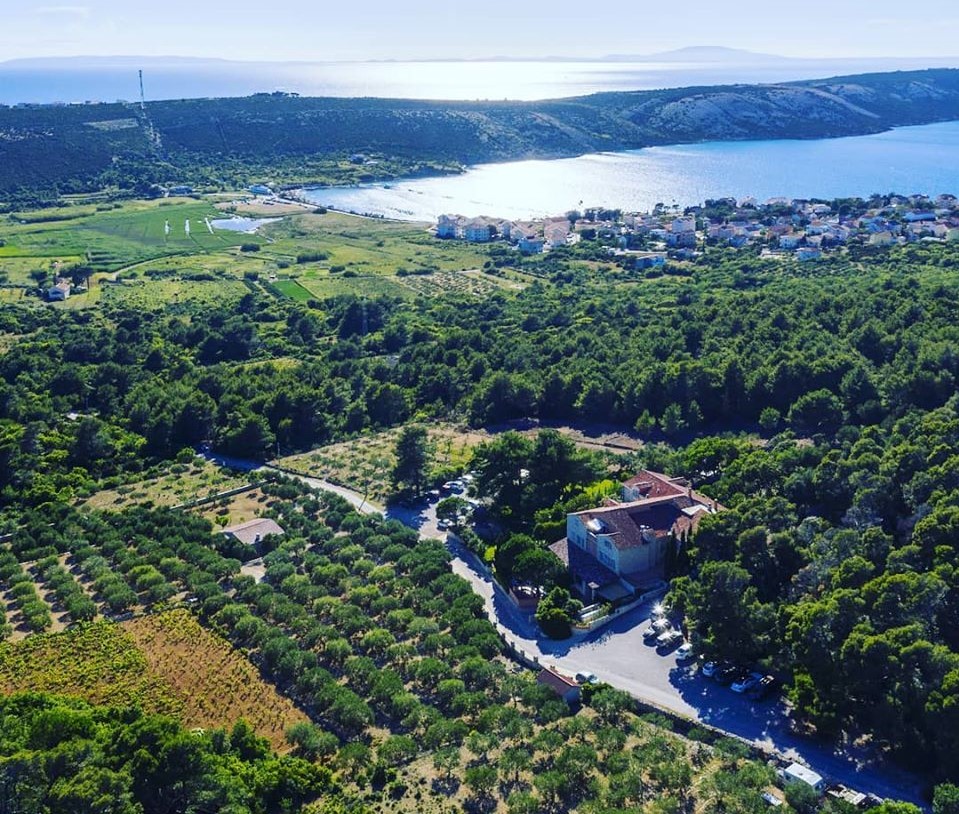
An island within an island. Pag's Boškinac is located within a lush green and neighbourless section of the island's interior © Boškinac
In a year where, depending on who you believe and how you extrapolate the info, tourism in Croatia is down by at least 50%, people sit comfortably isolated on Boškinac's large terrace. There, they take in the view of the olive trees and Boškinac's vineyards, with not a neighbour in sight. With special measures in place, seats in their Michelin-starred fine dining restaurant are similarly full. But just where are these guests coming from?
“Most of them this year have been from Croatia and Slovenia,” says Šuljić, not unsurprised. “I'd say the next largest group is foreign nationals, ex-pats, who now live in Croatia. But, also we've had quite a few from Germany, Austria, and Belgium. It's not so difficult for us to get busy. We are a relatively small hotel - 11 rooms, 55 seats in the fine dining restaurant, and 40 seats in our more informal tavern.”
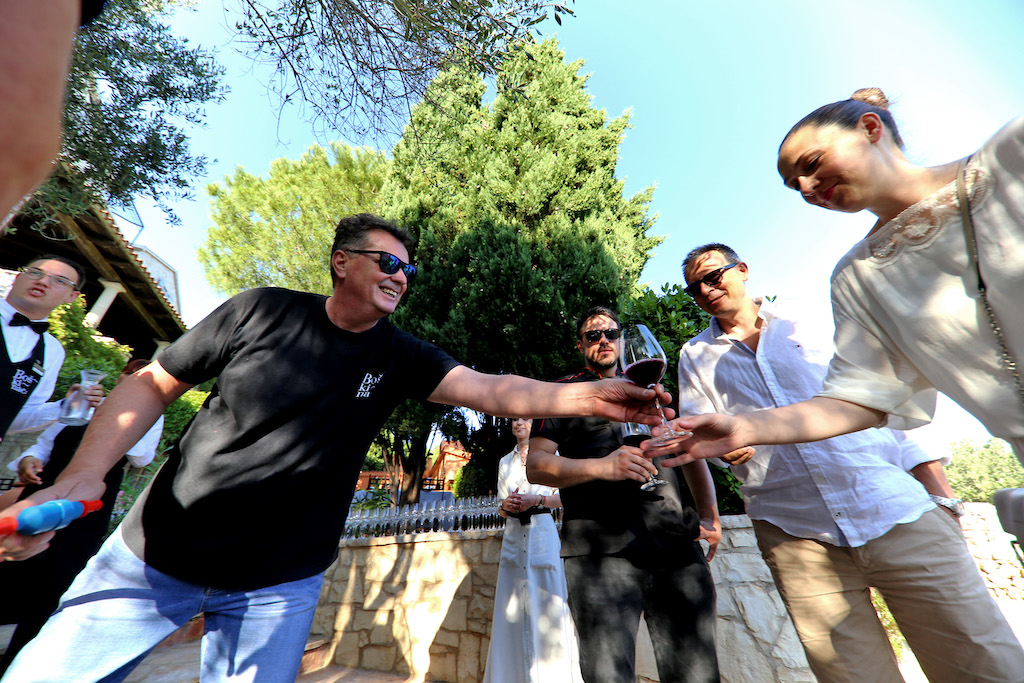
Boris Šuljić welcoming guests to Boškinac with a glass of their own-made wine in summer 2019 © Fabio Šimićev
Šuljić estimates that in total around 60% of 2020's guests have come from Croatia, 40% from other countries, a distinct change in the usual demographic they receive. Awarded a Michelin star in February of 2020, the hotel and restaurant have earned a reputation internationally for high-quality food, wines, service, and an experience much more unhurried and relaxing than that found in many places on the popular island. So, has he dropped his prices to encourage this year's draw?
“No, not at all” Šuljić tells us, “our prices remained normal. We are not so expensive like some other 4 or 5-star hotels in Dubrovnik, Rovinj, or Split. The average room price is around €200. Until 15 July, we arranged some special packages with the room and fine dining. We kept the food at the same price but offered the rooms a little cheaper in combination. It was successful. It seemed to attract people who'd heard of the hotel and restaurant, who maybe decided that right now was the best time to come and look. It's not so far to come here to check us out when you only have to travel from Split or Istria, even Zagreb, which is where many of these guests have been coming from. They stayed for one or two nights and enjoyed our Michelin-starred restaurant.”
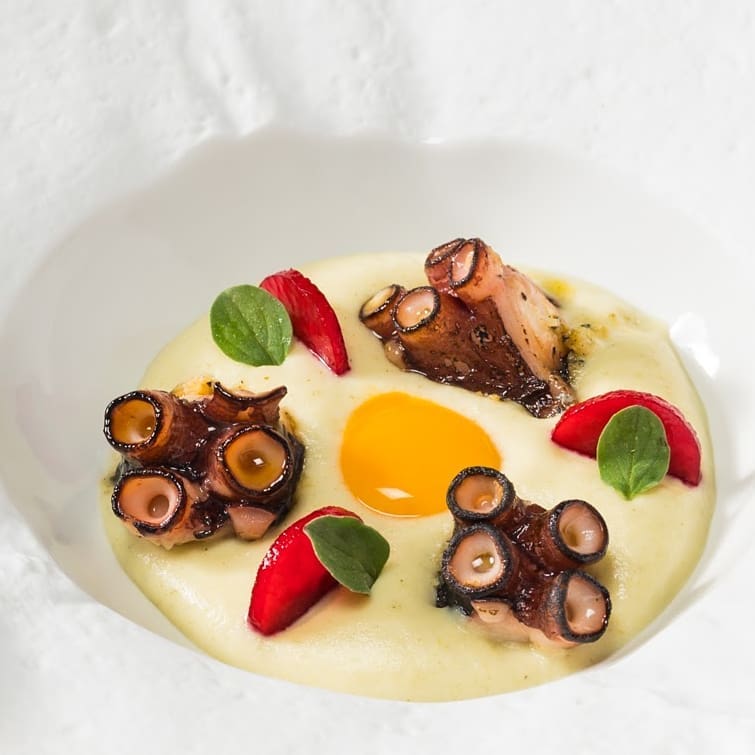
The flair with which Boškinac on Pag use their fresh, locally-sourced and premium ingredients earned them a Michelin star earlier in 2020 © Boškinac
Always keeping on top of developments in Croatia's gastro scene (you can stay updated on our Gourmet pages), one of TCN's most recent reports from Boškinac noted the venue's fluctuating success of the 2019 season. The summer's unusually variable weather was considered as perhaps one factor in the lack of footfall. With the sun shining reliably on Pag this summer, could it be that visitors care more about the weather than they do about Coronavirus? Is sun-seeking really a greater deciding factor for those looking at Croatia holidays than the ever-updating COVID-19 situation? Šuljić thinks not.
“I definitely think we're busier this year because of the Michelin star,” he says. “People seem to really recognise this international sign of quality. We got a lot of attention because of this. I think it is also because of our communication. We capitalised on the attention and we have been sending out very positive messages. We have every reason to be optimistic and it is this optimistic message we have been sending out; we are here, we are a small place, isolated, we have no neighbours, with allocations for relatively few people, but with lots of room and air and enough terrace for everyone. This is not the usual kind of busy hotel that's packed with people. We are very passionate about our food and our hotel experience. Ours is a business that concentrates on quality, not quantity.”
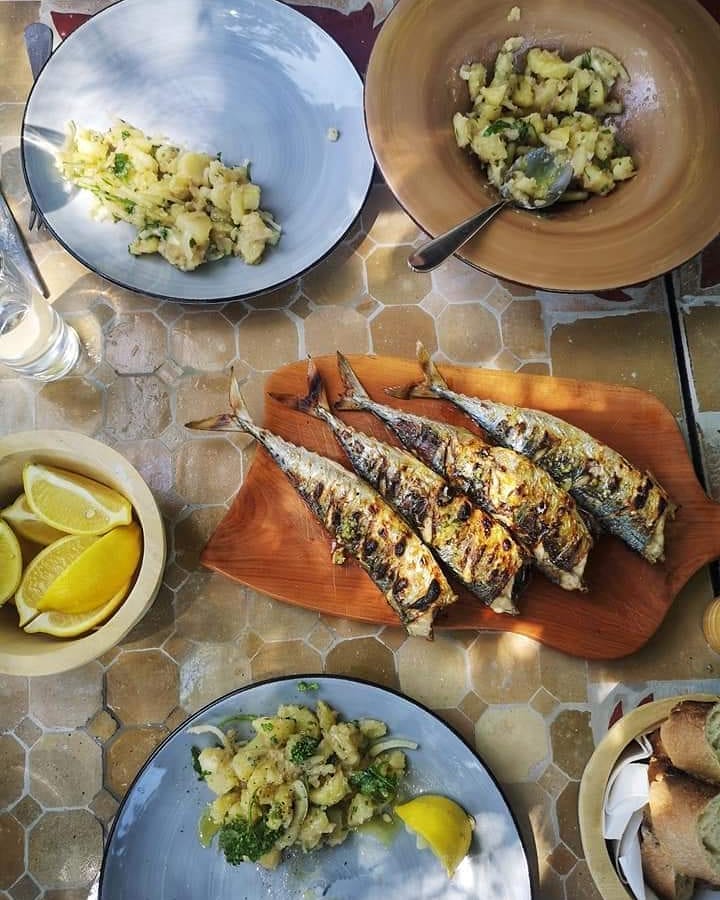
A platter of distinctly Dalmatian delights, an example of the food on offer at Boškinac on Pag's less-formal tavern restaurant © Boškinac on Pag
Though Šuljić's international recognition, unique premises and isolated location undoubtedly offer an advantage in attracting high-end clientele, could other Croatian businesses learn something from the clear and optimistic communication Boškinac has been sending out since the season's start? Well, it's an option to all but, since opening in 200, Boškinac's message and communications have been of premium importance to the business.
“We were very ambitious as soon as we opened, especially with our food,” remembers Šuljić. “But, at that time, this kind of fine dining experience was not so much recognised in Croatia. It was a very high cuisine for the time. People didn't understand what we were trying to do. Slowly we grew with our guests. It was a journey we made together. It was a gradual process. On our part, a mixture of good social media communication, some PR and word-of-mouth recommendations from previous guests was what worked best.”
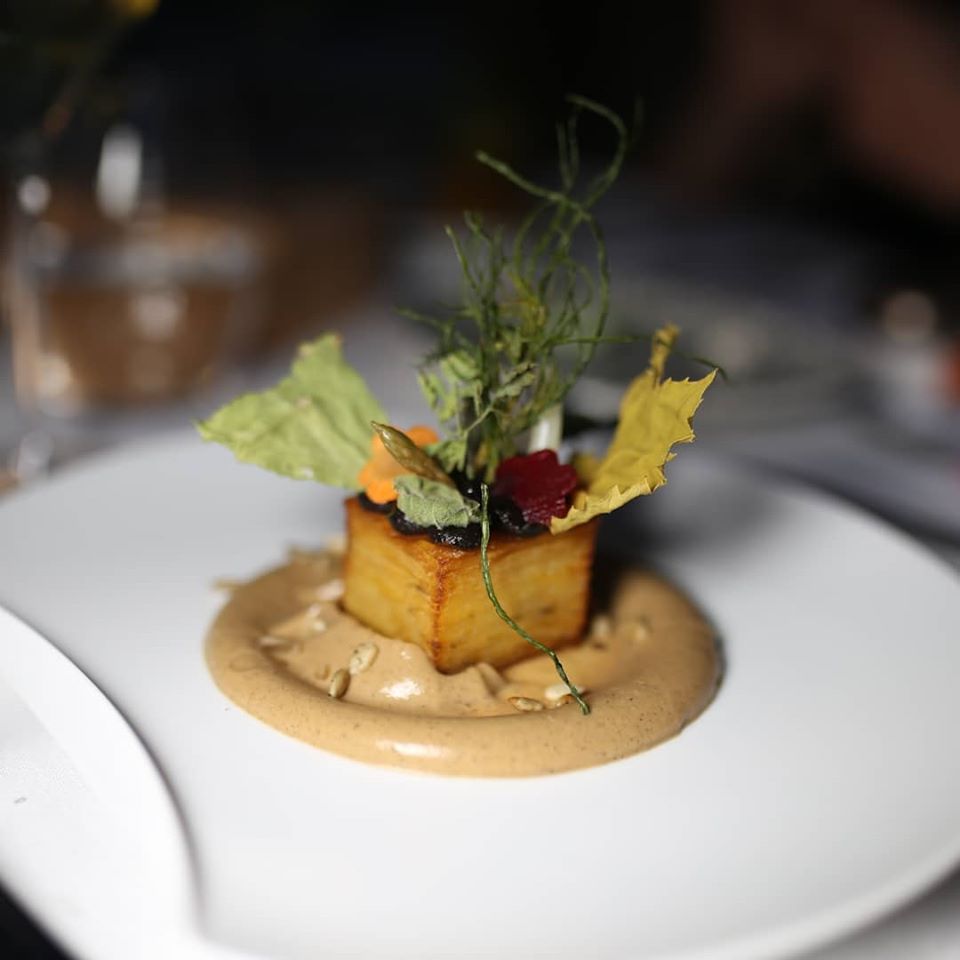
Spectacular presentation, one of the many wow factors attracting curious visitors to Boškinac on Pag © Boškinac on Pag
Of course, it's too early to tell if Boškinac will maintain its story of success through summer 2020. Šuljić is aware of this. And, even though it is even more difficult to predict the rest of the season than in any other year, he remains decidedly unworried because of their experiences so far.
“It is really interesting,” he says, when asked about future bookings for this summer, “I've never known anything like it. We have so far not had any bookings further than three or four weeks in advance. It's much more week to week. For instance, right now we have zero bookings for August. Usually, I would be concerned. But, it was the same one month ago and now we are almost full. All of the bookings are last minute. People are making their decisions based on the status and the quality of the information available. They check the news and the websites for advice, make a decision and then off they go.”
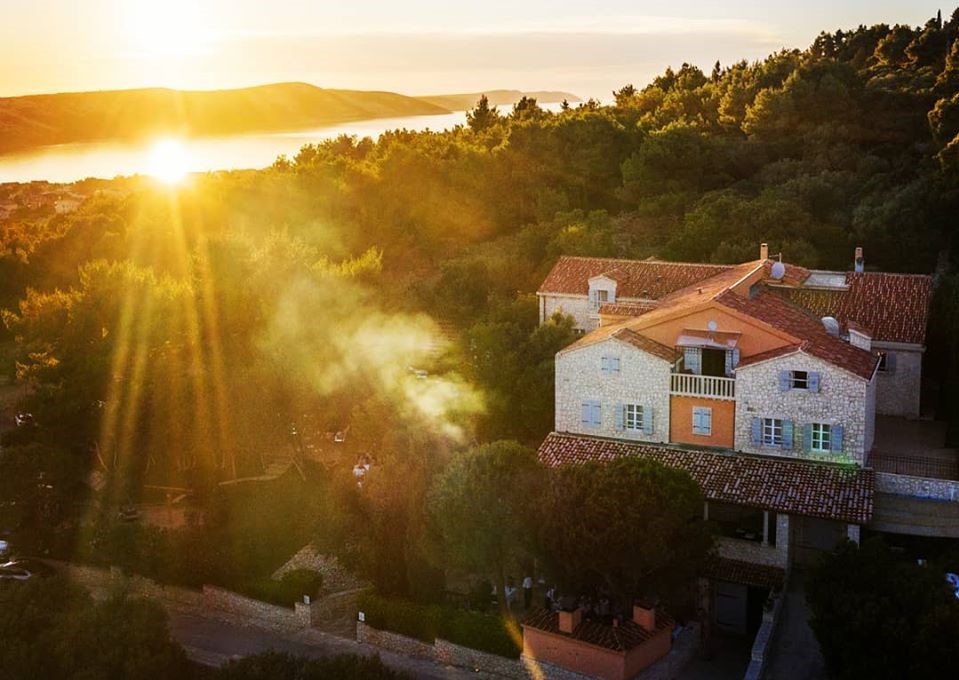
© Boškinac on Pag
For the best and most up-to-date information on Coronavirus and travel to Croatia, bookmark the Total Croatia News news page.
Total Croatia News is the best-read English language news site covering Croatia for people across south-east Europe. If you want to get your message across to those booking last-minute visits to the Croatia in summer 2020, contact us at This email address is being protected from spambots. You need JavaScript enabled to view it. to see what we can do for you.
Number Of Tourists In Croatia Rises Threefold Since Mid-May
ZAGREB, June 2, 2020 - Currently, there are 33,000 tourists in Croatia, according to the data collected by the e-Visitor, which means that over the last 14 days their number has increased threefold.
The latest data show that foreign visitors again exceed the number of local guests, as currently, 21,000 guests with foreign passports are visiting Croatia. Most of the foreigners have come from Germany, Slovenia, Austria, Bosnia and Herzegovina, and the Czech Republic.
During the three-month lockdown imposed due to the COVID-19 epidemic, local guests outnumbered foreigners, and now the trend is being reversed.
The adverse impact of the pandemic on the tourist trade is evident in the statistics showing that on 1 June 2019, there were 315,000 guests registered by the e-Visitor system and currently 10 times fewer guests are in the country.
The gradual reduction of restrictive measures and the fact that some central and eastern European countries open up their borders have led to the gradual strengthening of the tourist trade, according to the comment made by the Croatian Tourism Board director Kristjan Stanicic.
Also, 6% of the total number of tourists arrive in Croatia by bus, and most of them are Czechs, Slovaks, Serbians, and Poles, and this mode of transportation will enable speedy restoration of the tourist routes.


